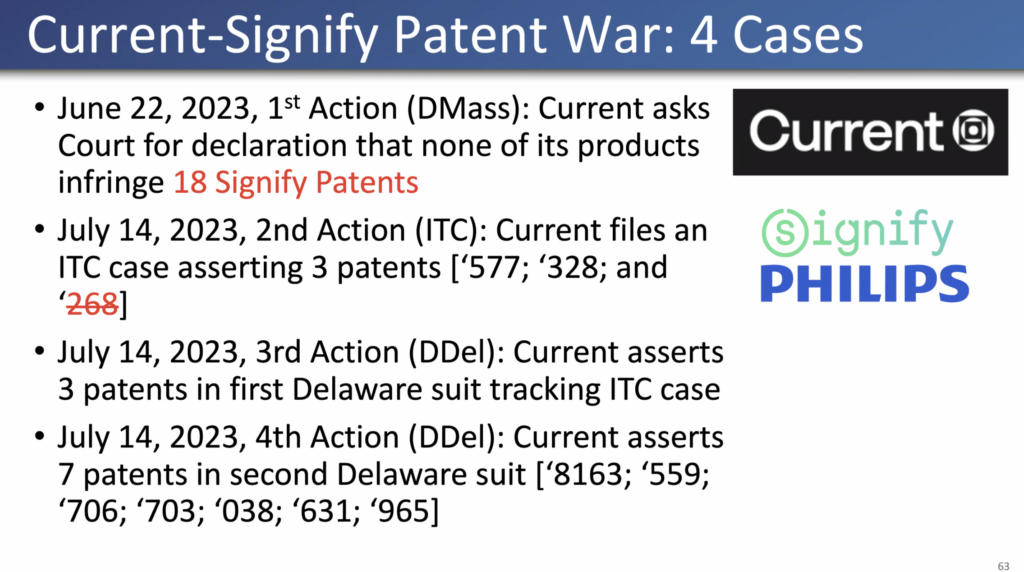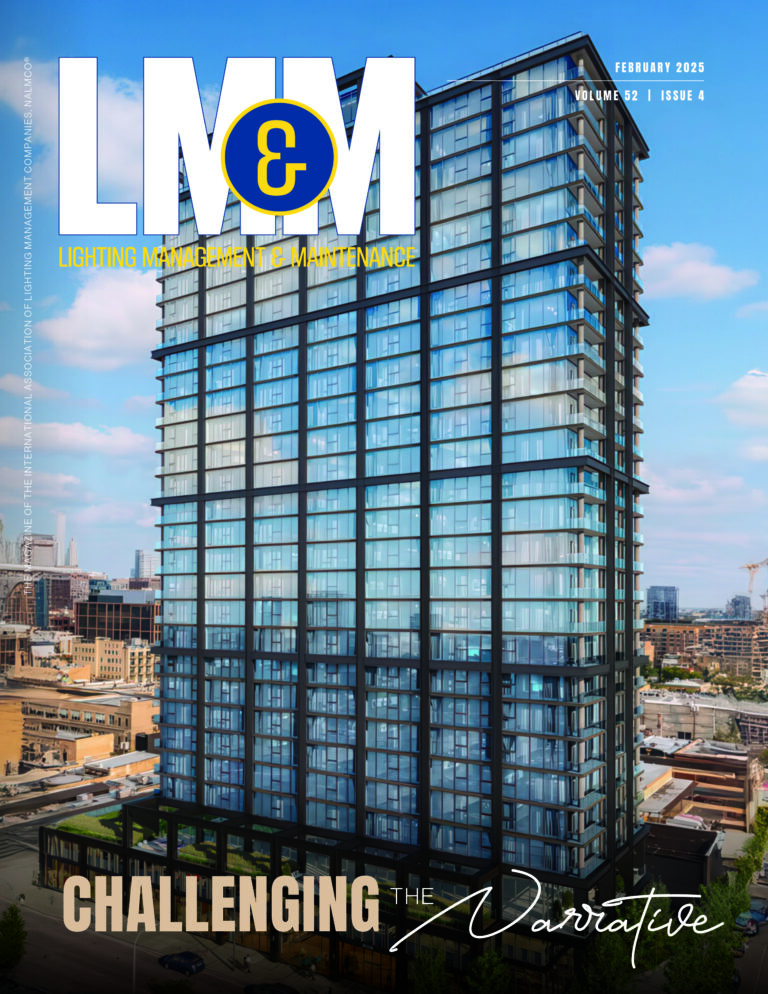This is the second in our coverage of Radulescu LLP’s webinar on IP litigation in the lighting industry.
The IP dispute between Current and Signify, was settled in February of this year. Attorney David Radulescu, Ph.D., shared some of the public details as well as his reasoned speculations. Current first filed suit in Boston, Massachusetts, in June 2023, in an attempt to establish that Current’s products did not infringe any of the 18 patents that were the subject of ongoing, back and forth licensing negotiations.
The escalation was rapid, with Signify responding by filing a patent suit in the International Trade Commission (ITC) and two in the Delaware District Court. However, the heart of the controversy was Current’s strategic legal positioning with respect to its Massachusetts District Court case, which was perceived as an attempt to gain leverage in ongoing licensing negotiations. This move led to that case being eventually dismissed on grounds of “bad faith,” as the court sided with Signify’s argument that Current was using their lawsuit tactically to pressure Signify in negotiations.
 While Signify’s motion to dismiss the Massachusetts case was pending, the litigation continued in the ITC where both parties argued over patent infringement related to lighting technology. Although Current was successful in getting Signify to drop 1 (‘268 patent) of the 3 asserted patents, there were still two Signify patents that were on schedule to go to full hearing in late February 2024. The parties settled the ITC case within one week of (1) Current’s Massachusetts case being dismissed and (2) the filing by the Staff at the ITC (who represent the public’s interest in the case) of its pre-hearing brief that sided with Signify on one patent (‘328 patent), but sided with Current on another (’577 patent).
While Signify’s motion to dismiss the Massachusetts case was pending, the litigation continued in the ITC where both parties argued over patent infringement related to lighting technology. Although Current was successful in getting Signify to drop 1 (‘268 patent) of the 3 asserted patents, there were still two Signify patents that were on schedule to go to full hearing in late February 2024. The parties settled the ITC case within one week of (1) Current’s Massachusetts case being dismissed and (2) the filing by the Staff at the ITC (who represent the public’s interest in the case) of its pre-hearing brief that sided with Signify on one patent (‘328 patent), but sided with Current on another (’577 patent).
The resolution came in the form of a confidential settlement agreement, revealed shortly after the pre-hearing briefs were filed.
Under the terms of the 10-year settlement, which was made public with numerous redactions of financial terms, Current and its subsidiary, Hubbell Lighting, agreed to a “one-time, lump sum payment,” possibly structured over six quarters, although the specific details have been redacted. Based on the redacted public version, the settlement seemingly did not include a royalty-based licensing model, which is typical in the EnabLED licensing program.
This payment arrangement is particularly noteworthy because it implies that the settlement amount was not prohibitively large. Radulescu speculated that typically, a stretched payment schedule over a few quarters, as opposed to stretched over the 10-year life of the agreement, suggests a moderate financial burden, manageable within a shorter fiscal timeframe.
There also was the inclusion of a cross-licensing agreement for Current’s proprietary (TriGain) red phosphor technology, important for improving CRI in lighting products.
This raises pertinent questions about the strategic decisions behind the settlement terms. Why were Current and Hubbell likely exempted from ongoing royalty payments on products or sales, unlike typical EnabLED practice where a licensee pays a royalty for covered products or pays a percentage of sales over the term of the patent usage? Also, why did Signify allow Current/Hubbell to offset any royalties with a cross-license when that has not been its apparent practice? Does this set a new precedent for future licenses?




